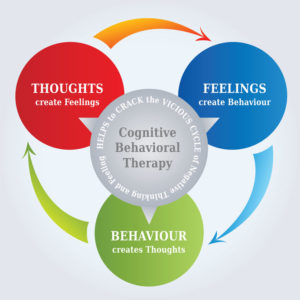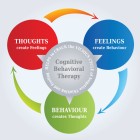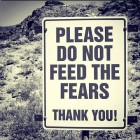Tag Archives:VIDEOS
Everyone Has To Like Me share
(Note: The part of the conversation that I’m talking about begins around 4:30.) Words of wisdom can come from so many places. I was pleasantly surprised when I watched this clip of two famous men inadvertently having a truly deep and personal conversation about feelings of insecurity on public television. I admire John Mulaney’s willingness to be vulnerable, because he makes it clear that it is not easy for him. His willingness to be vulnerable left room for Stephen Colbert to share about the place that he’s come to in his life where he is comfortable with the knowledge that not everyone likes him, and how he finds connection with people who understand him to bolster his sense of self. I wish I could be a fly on the wall to see whatever conversation took place backstage after the taping because Colbert definitely had Mulaney’s attention.
It’s not just public figures that have to come to terms with the fact that not everyone will like them. We all do. It’s just not realistic to expect that we will be so universally likable to all sorts of different people, with their own beliefs, preferences, baggage, and issues. When we try to do this, we get stuck in loops of toxic perfectionism that can be painful and sometimes even incapacitating. It can be uncomfortable being around someone who doesn’t like us. But, so long as we do little self-checks along the way to make sure that we are conducting ourselves as honorably and considerately as we can…that’s all we can do. After that, whatever the source of the dislike is (and it may have way more to do with the other person’s baggage than anything we, ourselves have done), it’s out of our control so all we can do at that point is practice acceptance. It can also help to check in with people who accept us for who we are to remind ourselves that our thoughts and feelings are valid and important.
Illustration of (Some) CBT Concepts share
 Overview
Overview
Cognitive Behavioral Therapy (CBT) is the strongest, research-backed therapeutic approach in the treatment of anxiety and, additionally, to be very effective for a whole host of other mental health issues. It is based on the framework that emotions, thoughts, and body sensations/physical behavior are at three points of a triangle and intervening on one of the points will result in changes the other two.
TEDx Talk: Feeling Good presented by David Burns, MD – In this YouTube video, David Burns, MD, a well known researcher, clinician, and educator introduces the power of CBT in his warm, humorous and down-to-earth way.
Concepts
“Automatic Thoughts”
Automatic thoughts are a core concept of CBT. They are our brain’s running interior dialogue or self-talk that narrates our life without us even really being aware of that it’s happening until we choose to pay attention to them. If your thoughts frequently contain “thought errors” that are biased to being negative ones, they are very likely to be increasing the level of anxiety or depression that you feel necessarily . These thoughts are habits that reflect the way we interpret things that we do, experience, or even how we view the world. The thing about habits is that, with some work, they can be shifted or changed. When you increase awareness of what your automatic thoughts are, you can start to challenge them and then, ultimately, reduce their effect on your perceptions and your mood. When working with children, negative automatic thoughts that affect them this can sometimes be referred to as a “brain bully.”
- An animated video that talks about automatic thoughts and gives an overview of some of the typical “thought errors” that people might have. Read More >
Thought Errors/Cognitive Distortions
“Focus on the Negative”
Focusing on the negative is known in CBT as a cognitive distortion or “thought error” that can increase the level of anxiety or depression that you feel. The human brain is drawn to negatives but it skews our perception of people and the world around us. With the easy access to negativity in the media, including the internet, it can be more and more challenging to pull our minds away and, instead, choose to focus on the wealth of positive things in our lives. However, the research shows that with practice we can get better at recognizing when we are focusing on only the negative aspects of something and then consciously remind ourselves of all of the positives in the situation instead.
- A playful animated video that illustrates this idea. Read More >
- TED talk that gives a more scientific explanation of how our brains seem to stay stuck on negative information, and how to get unstuck. Read More >
- Story time! At least that’s what our brain is doing when we are experiencing fear for something that might happen in the future. Check out this TED talk and learn more. Hmmm…why might this knowledge be important? Read More >
TED Talk: How Childhood Trauma Affects Health Across a Lifetime by Nadine Burke Harris, MD share
Dr. Nadine Burke Harris is a pediatrician who explains how repeated stress of abuse, neglect and parents struggling with mental health or substance abuse issues has real, tangible effects on the development of the brain and the body. She calls for, of course, prevention, routine screenings, and using this knowledge to guide medical screenings and interventions.
This information is based on a massive study done by the CDC (Center for Disease Control), that took a look at the potential long-term impact of childhood trauma. You can take a deeper dive into this information on the CDC website.
If you are interested in looking into what your ACES score is, you can see the questionnaire here. ** Important Note: If you have a history of trauma in your life you may feel uncomfortable or get upset when taking this questionnaire. I recommend that you consult with a mental health professional to guide you through this process.
If you found this interesting or helpful, you may also want to check out another post on my site, Oprah Learns about the Life-Long Impact of Developmental Trauma.
Oprah Learns about the Life-Long Impact of Developmental Trauma share
Treating childhood trauma
In the video above, Oprah is getting the word out about about the impact of chronic trauma experienced during a person’s childhood. She is promoting
a piece that she did for 60 minutes that you can watch if you have access to CBS online. In the piece, she learns from trauma expert, Dr. Bruce Perry, that kids who have considerable chronic trauma in their young lives are at significantly higher risk of “almost any kind of physical health, mental health, social health problem that you can think of.” She also learns, that the more people learn about being able to take a “trauma-informed” perspective of people you encounter in the world, the more you can promote healing in others or, at the very least, not add to their struggles.
This information is based on a massive study done by the CDC (Center for Disease Control), that took a look at the potential long-term impact of childhood trauma. You can take a deeper dive into this information on the CDC website.
If you are interested in looking into what your ACES score is, you can see the questionnaire here. ** Important Note: If you have a history of trauma in your life you may feel uncomfortable or get upset when taking this questionnaire. I recommend that you consult with a mental health professional to guide you through this process.
If you found this interesting or helpful, you may also want to check out another post on my site, TED Talk: How childhood trauma affects health across a lifetime by Nadine Burke Harris, MD.
Community Reinforcement and Family Training (CRAFT) share
 The CRAFT (Community Reinforcement and Family Training) program (briefly described in the video below) was created by the Center for Motivation and Change teaches people who love a person with an addiction how to walk the delicate balance of loving and accepting your loved one for the entirety of who they are right now, including their challenges, while at the same time, being able to have conversations with them that can gradually open their thinking to the possibility of deciding to make a change. It can also help you to “get off of the roller coaster” that addiction creates in people’s lives. You still have to struggle with the emotional pain of watching your loved one who is still on that roller coaster, but you can create a better life for yourself when you recognize what you can and can’t control. Check out their their 20-Minute Guide. This is a private business that I have no connection to. However, I think that what they have to offer is valuable.
The CRAFT (Community Reinforcement and Family Training) program (briefly described in the video below) was created by the Center for Motivation and Change teaches people who love a person with an addiction how to walk the delicate balance of loving and accepting your loved one for the entirety of who they are right now, including their challenges, while at the same time, being able to have conversations with them that can gradually open their thinking to the possibility of deciding to make a change. It can also help you to “get off of the roller coaster” that addiction creates in people’s lives. You still have to struggle with the emotional pain of watching your loved one who is still on that roller coaster, but you can create a better life for yourself when you recognize what you can and can’t control. Check out their their 20-Minute Guide. This is a private business that I have no connection to. However, I think that what they have to offer is valuable.
This model is based on the same science that has created a therapeutic approach called “Motivational Interviewing” that is used throughout the professional substance abuse field. It is a powerful tool that needs to be applied with patience and acceptance. It recognizes the reality that the person with the addiction is truly the only one that can decide to enter treatment and commit to the work that they need to do to stop their substance abuse. This is not a free service, but it may be worth the money. It’s so easy to fall into unpleasant power struggles with a loved one in these situations. These techniques teach you how to be a power struggle ninja and still feel like you are doing what you can to encourage change.
Teaching a Growth Mindset by Carol Dweck, PhD (video) share
 The TED Talk at the bottom of this post is another video of Dr. Dweck, this time addressing some of the do’s and don’ts for how to parent or teach (or, I would argue, live your life) in a way that fosters the growth mindset. Here are the points that stand out to me:
The TED Talk at the bottom of this post is another video of Dr. Dweck, this time addressing some of the do’s and don’ts for how to parent or teach (or, I would argue, live your life) in a way that fosters the growth mindset. Here are the points that stand out to me:
- Don’t simply praise a child for the effort they put forth.
- Don’t react to mistakes and failures with anxiety, concern, and consequences.
- Praise for effort needs to be given within the context of feedback about the quality of the results of their efforts. Parents and teachers can help kids by encouraging effort but they ALSO:
- talk about areas where the child can improve or do differently the next time.
- provide opportunities to deepen their understanding of the material and revise their work to try again.
For more information regarding this way of thinking, be sure to check out the other items in Skills Worth Working On, by clicking on the “Growth Mindset” tab.
TED Talk - What Fear Can Teach us presented by Karen Thompson Walker (video) share
Dan Zadra says (according to the internet), “Worry is a misuse of imagination.” So it seems to be a logical extension of that idea to say that we worry most about the things that are easiest to imagine. In this TED talk, Karen Thompson Walker cites history and scientific research to assert that this is indeed the case. Knowing this has the potential to help us make more informed and practical decisions…if we strive to focus on facts and not the lurid details that our brains can conjure. It can also help us short-circuit our brain’s inclination to borrow trouble and leave us marinating in the anxiety of what is possible, rather than what is probable. When we recognize our fears for what they are, a story that our mind is creating about what could possibly happen, after taking a logical look about whether the fear is something truly worth worrying about, we can choose to give less importance to some of the scary stories that our brains can distract us with.
PS – If anyone has a reliable citation for the quote above, please let me know!
Panic Attacks Part 3: Fear of the Fear - Don't Let Panic Attacks Take Over Your Life share
Previous articles in this series:
- Panic Attacks Part 1: What is Panic & Why We Need It
- Panic Attacks Part 2: The Antidote for Panic & Relaxation Breathing
Panic attacks feel very intense when you have them. At best, it’s not a comfortable feeling. At worst, it feels very scary because your body feels like it’s out of control. Some people even worry that they are having a heart attack. If you are experiencing these symptoms for the first time, definitely talk with a medical professional to rule out any medical causes before treating the symptoms as a panic attack. This is important for two reasons. The first is that you need to get a proper diagnosis. The second is that if you are constantly worrying that you are having a heart attack…that’s going to increase your anxiety and make successfully treating panic very difficult.
 Once you know that your body is healthy and ok, it’s time to dig in to the emotional aspects that come into play with panic and anxiety. When you worry too much about the possibility that you might have a panic attack, then this worry itself can become the trigger for your next panic attack. I call this having “fear of the fear (that it will happen again).” With the use of acceptance, information, “growth mindset,” and skill development, here are some guidelines that work against the negative spiral that can happen when people start to develop a “fear of the fear.” This article assumes that you already have started working on developing the skills for turning around a panic attack and is part 3 of a four-part series of articles I hope to complete. Hopefully, I’ll get part 4 up soon!
Once you know that your body is healthy and ok, it’s time to dig in to the emotional aspects that come into play with panic and anxiety. When you worry too much about the possibility that you might have a panic attack, then this worry itself can become the trigger for your next panic attack. I call this having “fear of the fear (that it will happen again).” With the use of acceptance, information, “growth mindset,” and skill development, here are some guidelines that work against the negative spiral that can happen when people start to develop a “fear of the fear.” This article assumes that you already have started working on developing the skills for turning around a panic attack and is part 3 of a four-part series of articles I hope to complete. Hopefully, I’ll get part 4 up soon!
- Recognize that this is a new situation for you and, because of that, it makes sense that it’s hard in the beginning to figure out what’s happening and how best to manage it. Also, know that you’re not alone. There are many people who have or are currently going through this too.You are having, what is called, a panic attack. [Growth Mindset]
- Remember that fight or flight mode is a normal thing that our bodies do. The only problem is that it’s getting triggered when you don’t actually need to respond physically to an emotionally stressful situation. The most important thing to know here is, NO HARM WILL COME TO YOUR BODY AS YOU EXPERIENCE IT (your body physically revving up to fight or flee). It does feel yucky to be in physical panic mode. This is especially true because your body, in that moment, is primed with an abundance of energy to physically react and that means that you experience temporary physical changes to your body (i.e. increased heart rate, quick & shallow breathing, increased blood circulation to muscles, decreased blood circulation to the “rational” part of your brain, and more), but your body naturally knows how to shift out of this mode when the perception of a physical threat is gone. [Watch this great video about how the US government has learned to train Navy SEALS not to panic.]
- Accept that this is not your last panic attack. What I’m saying here is find a way to be ok with knowing that it will happen again AND that should one happen and your growing relaxation and cognitive skills can’t turn it around, you can ride it out until it’s done and be still be ok. In general, the goal is for the panic attacks to start reducing in intensity as you get better at turning them around but this won’t happen if you avoid panic attacks, or things that might cause them, rather than face them. [Acceptance]
- Continue to experiment with and practice various relaxation techniques (relaxation breathing is the most important one for panic) and good self care habits so that you can hone your skills and have more “tools” in your “toolbox” when the need arises. [Skill Development]
- Work on developing cognitive strategies that can help prevent panic attacks from happening or intervene at the early signs of panic so that you can prevent a full blown physical response. [Skill Development]
- Keep a list of things that help turn your panic attacks around so that you can refer to the list the next time. [Skill Development]
- Remembering that low blood sugar, hypoglycemia, can mimic the beginning feelings of a panic attack, carry a healthy snack with you that has a nice combination of protein and complex carbs. [Check out this podcast by Dr. Kristen Allot about why this is so incredibly important.]
- Minimize or, ideally, eliminate caffeine. Drink water. Enjoy water. Did I mention water? [Information]
Remaining article in this series:
- Panic Attacks Part 4: Time To Tune Into Your Early Warning System (coming soon)
TED Talk: The Power of Believing that You Can Improve by Carol Dweck, PhD (video) share
Think about the difference, emotionally, between these two statements:
- I can’t ride a bicycle.
- I can’t ride a bicycle, yet.
For me and, studies show, for a lot of other people, the first sentence communicates a limitation. The second sentence is full of possibility. That’s not to say that everyone who says that they can’t ride a bicycle believes that they will never develop that ability. It just means that the second sentence clearly leaves the door wide open for growth to occur.
Psychologist, Carol Dweck, is a professor and researcher at Stanford University. She has spent a considerable amount of her professional life focused on trying to deepen our understanding of motivation. What makes people do what they do? In the TED talk below, she speaks about the results numerous studies, all lending significant support to the idea that, when students know that intelligence/skill is something that can be nurtured and improved upon, they are more likely to:
- be curious and want to learn new things (throughout your entire life)
- put a lot of effort into trying to learn more and more
- confront uncertainties rather than avoid them, allowing yourself to take chances and make mistakes for the sake of eventually getting better
- take constructive feedback as an opportunity to improve rather than as a personal criticism
- be inspired by others who are better than you rather than intimidated by them.
In one of her studies, a large number of students were divided into two groups. One group was told, simply, that they were smart kids. The other group was taught scientific facts about the brain and learning. It was explained to them that, “when they step out of their comfort zone to do hard things and they stuck to them, the neurons in their brains can form connections, stronger connections, and over time, they [the kids] could get smarter.” The current term in the literature for this is “neuroplasticity.” The study found that students who learned that trying things helps them become smarter showed greater motivation in school, better grades, and higher test scores.
For more information regarding this way of thinking, be sure to check out the other items in Skills Worth Working On, by clicking on the “Growth Mindset” tab.
My YouTube Channel share
Check out my YouTube Channel, Andrea’s Ideas, for other great videos that I haven’t had a chance to included on this website, as well as ones that are already here.
Click here to view my channel directly on YouTube. However, if you aren’t familiar with what playlists are, I would recommend that you watch the video below first. Happy learning!









